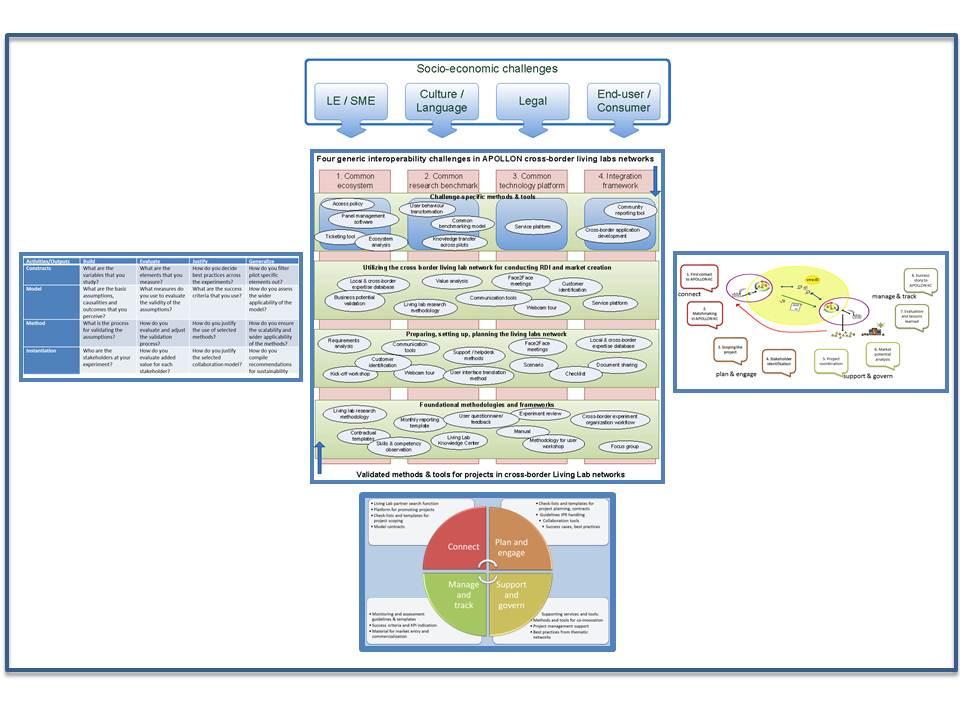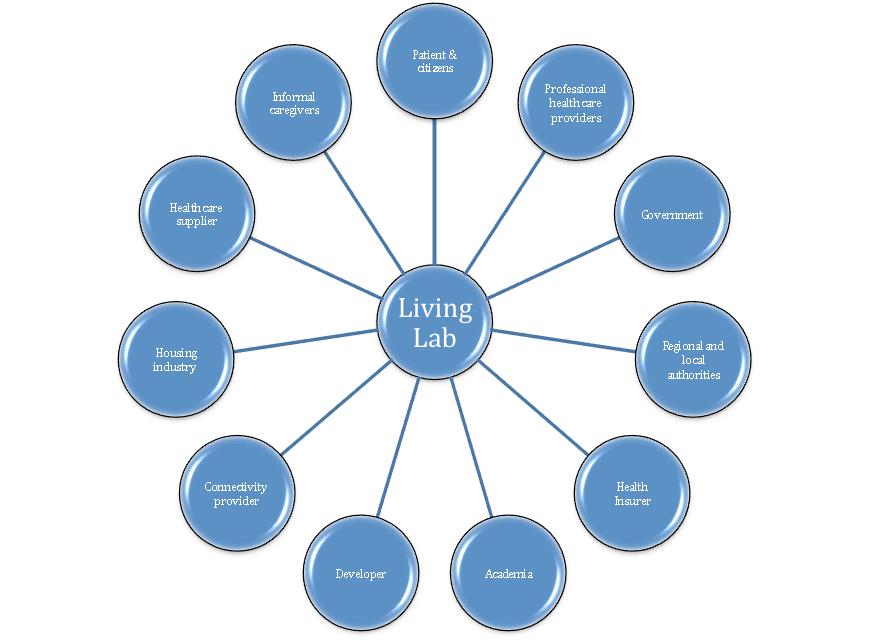
5 minute read
3 Homecare and Independent Living Experiment
Visualization of APOLLON Methodology framework
Finally, in order to ensure sustainability and wide uptake of these results, a number of methods, tools and guidelines as proposed and developed within the APOLLON project have now been made available for a wide audience through the Knowledge Center (http://knowledgecenter.openlivinglabs.eu ).
Advertisement
In APOLLON, the cross-border activities of WP2 within the domain of Homecare and Independent Living were focussed on the transfer of existing technologies from one context to another. During this transfer we looked specifically to what extent a common eco-system, present in each of the locations, would foster the cross-border pilots.
In order to do so, we organised our activities on the following three specific cross-border experiments: • Belgium –Finland: Within this pilot the Belgium SME Televic, which has developed a Homecare supporting communication technology –deployed in their home market, transferred their system, called Xtramira® to the Finnish market. The service provides a video and audio communication between client and the homecare providing organization. This was taken up by the Finnish Living Lab, which had identified local actors that were in need of such service. A lot of effort was put into the preparations and contextualisation of the service.

Netherlands –Spain: In this experiment the ADL system is an intelligent home automation application for the elderly of the Dutch SME Innoviting was transferred to Spain. The system that uses small wireless sensors capable of recognizing the behaviour of residents’ daily activities, was successfully transferred and tested within different Spanish households. Here also the local Living Lab, IAV, played a crucial role in the set-up and deployment of the technology.

Netherlands –Belgium: Next to the predefined experiments, an additional experiment was executed, as a result of the network activities of the project. This experiment transferred the I Can Help service, a social emergency service, developed by Logica Netherlands, a large enterprise, to the Belgium market. Again it was mainly the local Living Lab, IBBT, which facilitated this process by searching for the appropriate partners and establishing of the eco-system. As this experiment was conducted at the end of the APOLLON project we were able to integrate and by so evaluate the defined APOLLON approach as well as the different tools and methods used in the previous experiments.
This image cannot currently be displayed.
Based on these experiments we were able to: • Define and compare the different Homecare and Independent Living Lab approaches. • Develop a transfer strategy and working methods • Validate the used methods and tools for cross-border pilots in the Homecare and Independent Living network • Map the different contextual factors, including the regulatory and legal issues as well as the service/product value-chain and eco-systems • Evaluate to what extent the network can be used for exploring new and emerging markets within the Homecare and Independent Living.
The lessons learned with regard to cross-border pilots and networks in the domain of the Homecare and Independent Living were situated on various levels: • Tools and methods: filling in the overall APOLLON approach and contributing with some specific methods –such as the requirement analysis • Collaboration and eco-system: identifying key-roles and activities within the ecosystem as well as the challenges for the Living Lab as key-actor in the process • Domain-specific issues: Listing different domain specific elements that are important within cross-border pilots in the domain of Homecare and Independent Living such as privacy, liability, ethics, requirements-checklists, safety, maturity, reliability (testing!), costs, trust, rules & regulations and access to end-users.
The three experiments organized in this pilot enabled the comparison of different living lab approaches and to develop a transfer strategy and working methods. One of the main findings is the importance of carefully establishing an ecosystem for living labs innovation within the health and wellbeing pilot. One of the conclusions from the pilot is that establishing a common, fixed ecosystem to benefit cross border collaboration of living labs was not feasible, due to the fact that different healthcare systems exist in different countries. However, the pilots also indicated that organizing simplified forms of such ecosystems built around actors and their roles and responsibilities is a necessary condition. In the set-up phase of the crossborder living labs collaboration project it is important to define the added value within the ecosystem. In case this added value is insufficiently clear and explicit, actors are less motivated to engage in collaboration.

Generic actors in a living lab active in homecare & independent living
The pilot results also show that the Living Lab has clearly been identified as a neutral and valuable partner to facilitate the innovation process from start to end. On the other hand this role –and in particular the ambition to play a more active role in the deployment of the experiments - is challenged as it is expected that the living labs also act as “ambassador” of the service that is experimented, which is often beyond what living labs are offering as a service.
In terms of methodology to support the setting up and operation of the living labs network, the four phases (connect, plan and engage, support and govern, manage and track) proved to be very useful stepping stones. Already across the three experiments within this vertical pilot the implementation was different, which demonstrates the need for contextualization of methods and tools. More specific methods and tools that were found valuable, included requirements analysis, value analysis, and contextualization and friendly-user testing of a service.
A final conclusion from this pilot is that each of the different actors involved (Living Labs, SMEs, Large Enterprises) benefited from the pilot in terms of gaining insights on how crossborder pilots work and the implications for the own organization. Living Labs enriched their current portfolio with new processes, tools and methods and gained valuable knowledge. SMEs were able to adjust their technology and service to enter foreign markets, as well as their business model and market positioning, but also participation in the pilot resulted in much more effort on domains not clearly foreseen. Large enterprises gained insights in benefits of the living lab, identified new market prospects and were able to explore of new business models.









